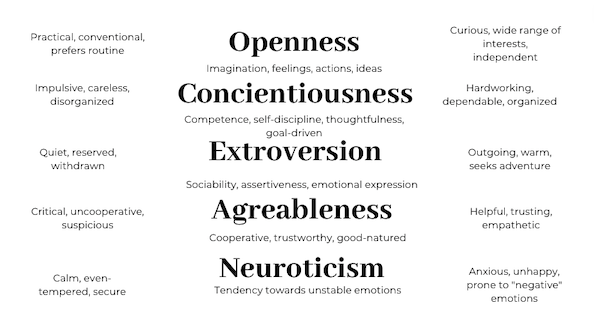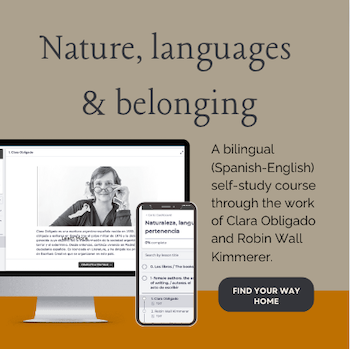
In this article, you will find 5 steps to help you build your students up, and strengthen them and your relationship with them. Some of the sections have reflective prompts so that you can explore where you are at and find ways to implement these steps in your language teaching practice.
1. Get personal. Look into your student
Before your first class with a new student, you need to get to know them deeply: identity, motivation and interests are the basics. We usually get part of that information during our first interactions with them via email or during a consultation call.
But this is not enough.
We need to know more about them. We need to know how their past experiences inform their present and the actual, deep down reason why they are learning this language. We also need to know their beliefs around the act of learning (some students think they have to only speak in the target language, others believe that no pleasure or fun is required in the process of learning, etc.).
We need to understand their personality: are they introverts or extroverts? And beyond that.
You need to know as much as possible about their personality traits. Let’s explore the Big Five Personality Model, which is the most widely accepted personality theory held by psychologists today. The theory states that personality can be boiled down to five core factors.

Remember that we all tend to present ourselves in a certain way at the beginning of a relationship (so during your consultation with the student you may not find enough information about them), so you need to create systems to know as much as you can about your new student before the training starts.
On the other side of the motivation are the challenges and blocks the student has. Understanding those blocks is paramount to creating a safe space for learning. More about this in step 3.
REFLECTIVE PROMPTS
- How do personality traits impact the learning process?
- In your opinion, what characteristics influence the learning process more, and what qualities have a lesser impact?
- Explore the big five personality traits aforementioned without judgement. This is not an exercise to decide what traits are better or worse for learning. Let’s assume that all traits allow for learning, and it’s only a matter of knowing how and how those traits impact learning. Now, find ways to support students at any point of those spectrums.
- What systems can you get in place to know as much as possible about your student before the first class?
2. Look at what's going on with you.
Now it’s time to look back at you. Whatever traits exist in the student, they are only half of the equation. You hold the other half. Teaching is a dance, a relationship, a trio between teacher, student and subject (in this case, the language). Your identity plays a role in this relationship, as do your personality traits and past experiences.
REFLECTIVE PROMPTS
- What is your identity, motivation and interests and how does this relate to those of your students?
- What’s your personality and how does that impact how you work, and how does that impact the way you relate to your student’s personality traits?
- How do your past experiences impact your relationship with your student?
3. Look into your student's mindset and yours
Look for students’ mindset for learning/languages, biases, blockages, and conditioning that impact their relationship with the language, learning, you and themselves.
No learning exists separated from mindset, cultural bias, blockages, conditioning, and beliefs, both from the cultural and limiting types.
Your student’s mindset is shaped by their culture, experiences, education and interactions. Their mindset shapes their learning. You have a mindset shaped by those elements too. Your mindset shapes your teaching.
REFLECTIVE PROMPTS
- How does the mindset of the student shape their learning experience and how does your mindset shape your teaching and how does that impact your students?
4. Explore bias
Let’s say that you are unaware of your own bias from your cultural mindset which tells you that students who don’t speak much in class won’t succeed. Then you push your student to talk more or are frustrated when they don’t speak or speak only when prompted. Let’s say that your student is an introvert, comes from a culture that values introversion, has traumatising experiences with speaking up or staying quiet, etc.
REFLECTIVE PROMPTS
- How do you think that your unconscious bias is going to impact your student and their learning?
How do you think that your unconscious bias is going to impact your student and their learning?
What are your challenges, blocks, and biases, and how do those impact the relationship with your student. How do your blocks relate to your student’s blocks?
5. Stay grounded
Be a mirror for your students so they can see their own reflection. And this is not easy. We often fall into reaction mode. We take our students’ responses and behaviours personally. We react. We take our own unresolved feelings and stories to the session, which can harm the student. We need to be present and take note of what’s present for us, notice our reactions, feelings, and thoughts in the face of our student’s behaviours, responses, etc.
Your students need you to model being tolerant and calm. The class needs to be, first and foremost, a safe space for your student because learning cannot exist in a threatening or tense environment.
Now that you are armed with all this knowledge, you can initiate a strengthening relationship with your student.
The last piece of the puzzle is getting your own support as a language teacher or coach. As your student base grows so should your own personal and professional supervision and support from people who have more experience than yourself.
Join the mailing list to receive emails with guidance, support and mentoring opportunities from me, a 20-year experience language teacher and over 10 years of experience as an entrepreneur in the language industry.


